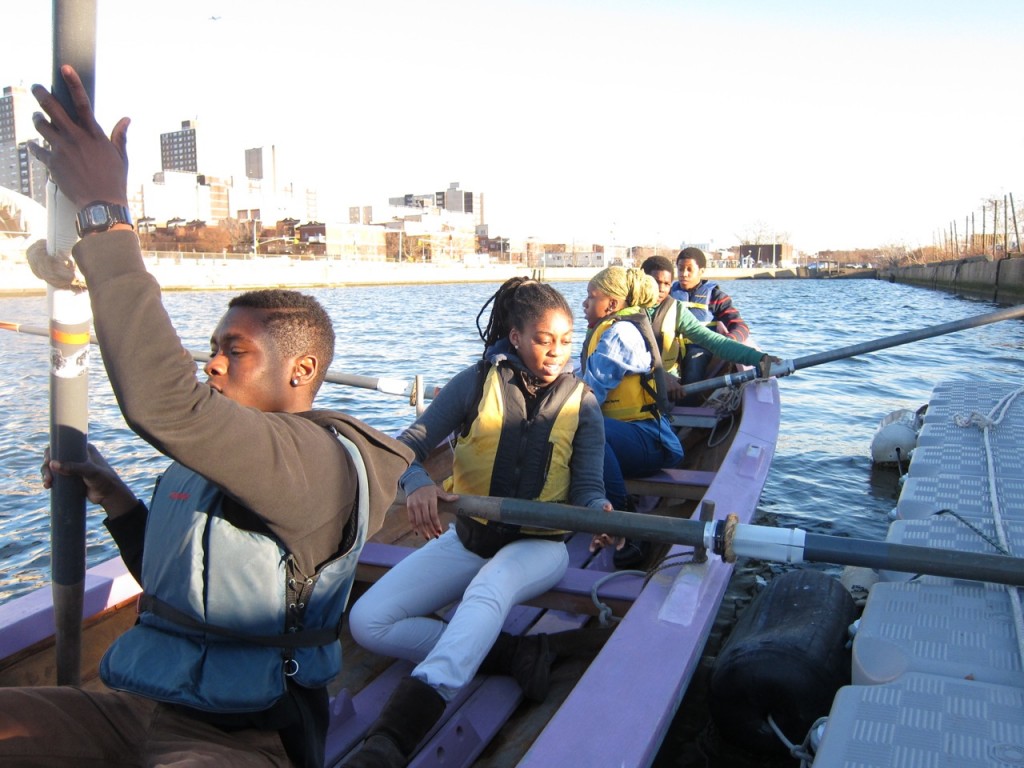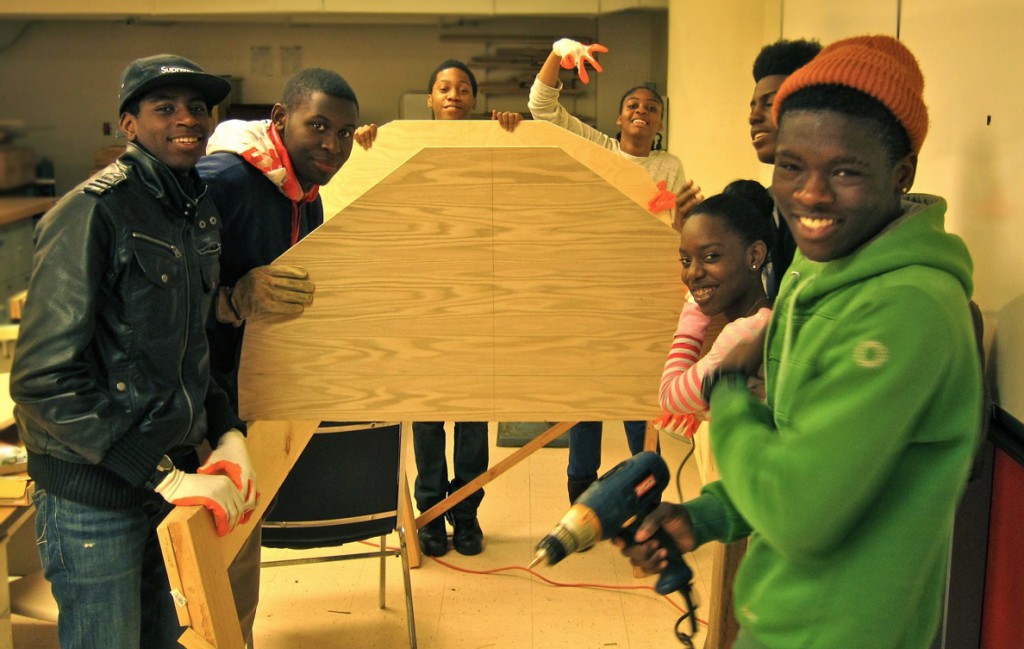Awesome Project: Making Modern Magellans
Published April 03, 2012
The Brooklyn Navy Yard’s high walls have long hidden its mysterious industrial interior. A sprawling mixture of mostly abandoned factories and former officers’ quarters, what was once the pinnacle of American shipbuilding during World War II has slowly fallen into decay after the Navy Yard’s officially closure in 1966. The 300-acre site quickly became a playground for New York’s boldest urban explorers, innocent and otherwise, as evidenced by bits of graffiti adorning many of the crumbling walls. As longtime resident Rob Buchanan says, “It was an interesting wasteland, and there were a lot of cool things you could do that mostly involved hopping over fences.”
Buchanan, 53, is a professor of journalism at Eugene Lang College of the New School and a nautical enthusiast. His interest in the Brooklyn Navy Yard springs not only from his love of urban exploration, but from his desire to bring a community boathouse to the Wallabout channel. Although officially re-opened in 1977 as a city-owned industrial park, redevelopment of the Navy Yard did not begin in earnest until the 90’s and access to its interior is still restricted.
“People don’t realize [the New York Harbor] is one of the great harbors of the world,” says Buchanan of New York Harbor. “It’s made for small boats.”
He emphasizes that for these reasons, many members of the Wallabout community have not traditionally thought of the waterfront inside the Navy Yard as an accessible resource. Now, says Buchanan, “It’s starting to open up and there is lots of residential development along the edge, which is great as long as there is public access.” Buchannan hopes to secure that access, at least in part, through his community boathouse project.
“People don’t realize this is one of the great harbors of the world,” says Buchanan of New York Harbor. “It’s made for small boats.” As a founding member of the Village Community Boathouse, located on pier 40 near West Houston Street on the west side of Manhattan, he can support such a claim with experience. For the last fourteen years, the boathouse’s all-volunteer crew has built wooden rowing boats and taken the public to row on the Hudson for free. “Our mission is to expand public access to the harbor. That’s what we believe in,” says Buchanan. He notes the importance of preserving public access to the harbor through continual use and fears that without their weekend rowing trips they might be pushed out in favor of larger commercial vessels.
Now, after all this time, Buchanan is wants to expand this public access to his own area of Brooklyn. “The Brooklyn waterfront is a very interesting space right now,” he says, citing the redevelopment of the Navy yard as both an opportunity and a potential obstacle. Buchanan selected the Wallabout Channel as his launching point because of the channel’s protected waters, which are far calmer than the nearby East River. “It’s a great place to put boats in the water and teach people to row,” Buchanan explains. He plans to create a public access point on the channel and to build the first boat in a fleet for the use of local schools and the general public.
Buchanan began his project last fall with a group of high school students from Benjamin Banneker Academy, the closest school to the Wallabout Channel. After finding the school’s administration and students were interested in rowing, Buchanan made plans this year to upgrade from the boat they currently borrow from their Manhattan Boat House. Like all their boats, it will be built by students and community volunteers. Buchanan notes that a central focus of Banneker Academy is community engagement, so “they were very excited that they would be building something for the community.” Buchannan is eager for the students to have the hands-on experience of boat building. He notes that many young people don’t know how to work with their hands anymore and that through boat building the students will learn to work together as a team. He’s also excited for the students to have the recreational experience of rowing on the water and get to know the Navy Yard, aspects of their community that are often overlooked.
Working around his academic schedule, Buchanan schedules his boat outings and volunteer boat-building sessions on nights and weekends and says trips average once or twice a week. He believes they can build their new boat in 12 to 15 three-hour sessions. In the mean time, he will continue exploring the Navy Yard’s long forgotten inlets and old coves with students and community rowers, until late fall, that is, when the weather becomes too inclement to go out. To get involved with the Wallabout Community Rowing Project or to make a donation, click here.

